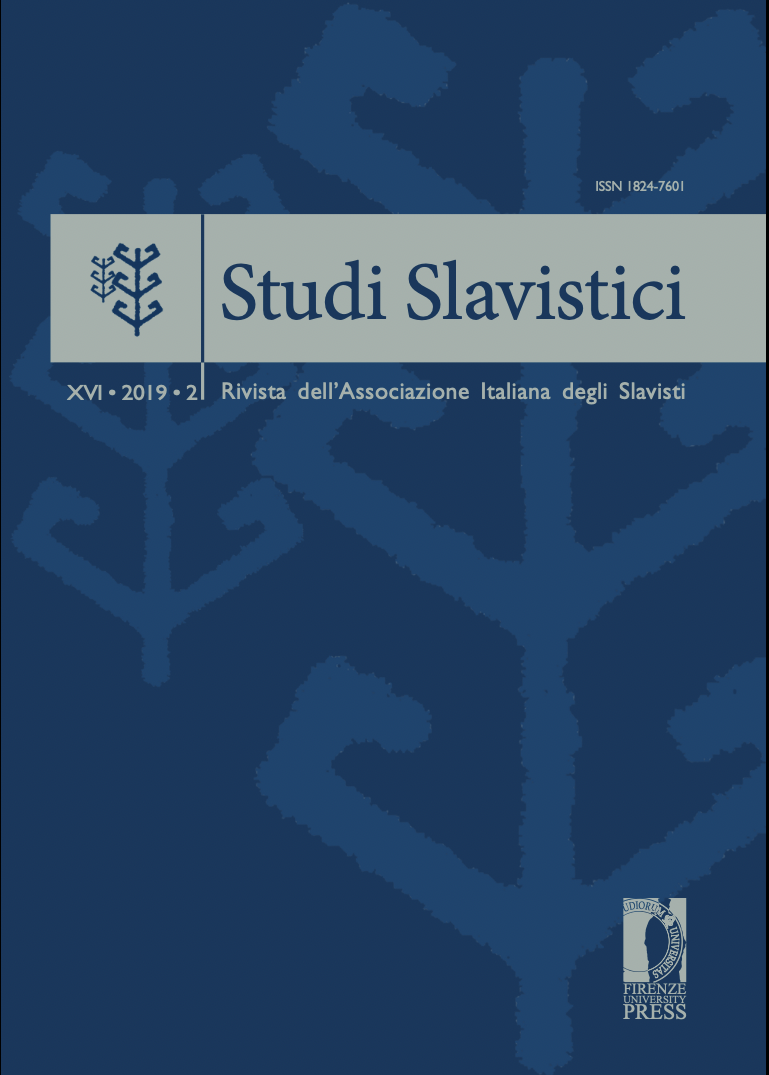Abstract
Literary scholarship still acknowledges M. Baxtin’s important role in understanding and defining skaz. In this paper I aim to analyze exactly what Baxtin wrote about skaz, in order to verify whether we can speak about a precise “baxtinian idea” of the term and its semantics. Taking the lively discussion of literary criticism of the 1920s into account, it could be said that neither Baxtin himself, nor any other scholar of the time ever succeded in offering a convincing formulation of what exactly the word skaz means. Baxtin’s focus on the “double-voiced utterance” is complementary to, but does not substitute the emphasis which Ejxenbaum put on the mimesis of the spoken word. This, in turn, does not exclude Vinogradov’s emphasis on a stylistic interpretation. Since the beginning, and up to the present day, the term skaz implies several semantic fields: it may indicate a form of composition (a literary genre), a genuine “spoken wording” (or “spoken language”), but its transmission in the context of folklore as well. It is used to indicate the narration a writer attributes to one of his characters as an “oral account” which may be dominated simply by orality (spoken forms) or by the “double-voiced utterance”. Through my argumentation, I try to delimitate the broad semantic spectrum of the term skaz, which may be defined as follows: to produce an oral narration within a literary text in such a way that the linguistic alterity of the oral message may be a “sign” of a specific cultural alterity, more exactly the alterity of folklore.


